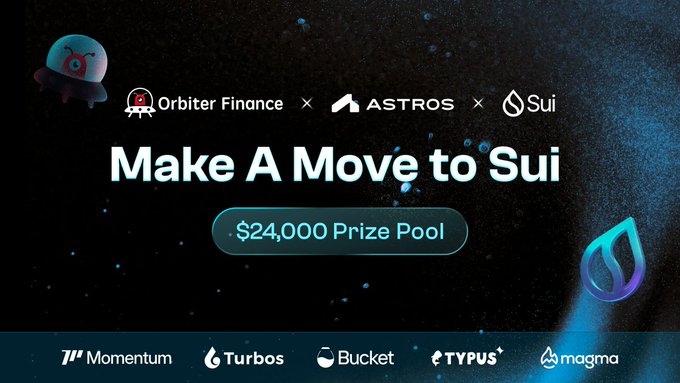Orbiter Finance: How the Cross-Chain Bridge for the Layer2 Ecosystem Operates
On May 24, 2025, the decentralized cross-Rollup bridge protocol Orbiter Finance officially launched its token OBT on the Binance Alpha platform. As a critical infrastructure in the Ethereum Layer2 ecosystem, Orbiter has enabled asset interoperability across over 20 Rollup chains, achieving 15-second transaction speeds and fees as low as $0.03. This launch not only introduced an airdrop of 80 million OBT tokens but also showcased how ZK technology is reshaping the foundational logic of cross-chain interaction.

This Token Insights article delves into Orbiter Finance’s cross-chain technological architecture, the OBT token economic model, and the market dynamics and risks following its Binance Alpha listing.
Core Technical Advantage: ZK-Proof Verification System
Orbiter’s key innovation lies in its zero-knowledge proof (ZK-proof) system. By compressing transaction data with ZK-SNARK, cross-chain verification time is reduced from the traditional 3 minutes to just 15 seconds, with Gas costs cut by 83%. Additionally, its SPV node network allows third-party developers to deploy verification nodes (requiring a 1 million OBT stake), dynamically allocating liquidity to reduce slippage. Testnet data shows an average slippage of only 0.12%, outperforming industry standards.
Technical Architecture: ZK-Proofs and a Decentralized Liquidity Network
Orbiter’s technological framework centers around three core components:
-
ZK-proof verification: Uses ZK-SNARK to compress transaction data for efficient, low-cost cross-chain validation;
-
SPV node network: Enables third-party node deployment and dynamic liquidity allocation to minimize user slippage;
-
Inscription cross-chain protocol: Supports the transfer of assets like BRC-20 and ERC-404 between chains like Arbitrum and zkSync, with transaction costs as low as 0.00023 ETH.
For example, when a user transfers USDC from the Base chain to StarkNet, Orbiter splits the transaction across several SPV nodes and aggregates verification results via ZK-proofs. This mechanism supports over 470,000 cross-chain transactions per day, capturing 31% of the Layer2 cross-chain market share.
Binance Alpha Listing: Airdrop Rules and Market Response
The listing event featured two key components:
Airdrop eligibility: Requires holding 200+ Binance Alpha points($150) and spending 15 points to claim 8,000 OBT ($136), all within 24 hours. Only 62% of eligible users claimed the tokens, sparking ongoing community debate over the high threshold.
Trading competition: A $640,000 reward pool with eligibility starting at $10,000 in trading volume. On day one, OBT reached $120M in volume, trading in the $0.17−0.23 range, marking a 340% premium over private round pricing. While protocol TVL rose 47% to $530M, sUSD stablecoin depegging concerns persisted.
OBT Tokenomics: Inflation Risk and Governance Power
OBT has a total supply of 10 billion tokens, with 28% (2.8B tokens) initially in circulation. Team and institutional holdings account for 38%, posing potential unlock sell pressure. On the deflationary side, 20% of protocol revenue is burned monthly, and 50% of fee revenue is shared with stakers (currently offering 215% APY). Compared to competitors, OBT boasts higher capital efficiency (volume/TVL ratio of 15:1 vs. industry average 8:1), though its FDV ($1.7B) is only 70% that of Across Protocol.
JuCoin’s token analytics tools enable users to track burn and staking metrics. Governance-wise, token holders can vote on parameters such as cross-chain fees, but the top 5 nodes control 61% of liquidity, raising centralization concerns.
Potential Risks: Technical, Regulatory, and Competitive Pressures
-
Technical risks: Absence of public audits and node centralization—on average, similar protocols faced 1.3 attacks per year in 2024.
-
Regulatory pressure: The U.S. SEC scrutiny of ZK technology may limit North American user access. The EU MiCA law mandates that cross-chain protocols retain transaction records for six years, increasing compliance costs.
-
Competitive threats: Native solutions like StarkNet and Polygon zkEVM are squeezing out third-party bridges. Hop Protocol v2, with 9-second transaction speeds, directly challenges Orbiter’s edge.
Future Outlook: From Cross-Chain Bridge to Layer2 Liquidity Layer
Orbiter’s long-term strategy focuses on three pillars:
-
RWA expansion: Launching real estate tokenization cross-chain services in Q3 2025 to boost utility with real-world assets;
-
Enterprise solutions: Piloting $1B daily institutional cross-chain services with BNY Mellon;
-
AI optimization: Integrating machine learning to predict liquidity demand and dynamically adjust node incentives.
When daily cross-chain volume stabilizes above $250M and staking APY falls below 80%, Orbiter’s economic model can be considered mature and healthy.




